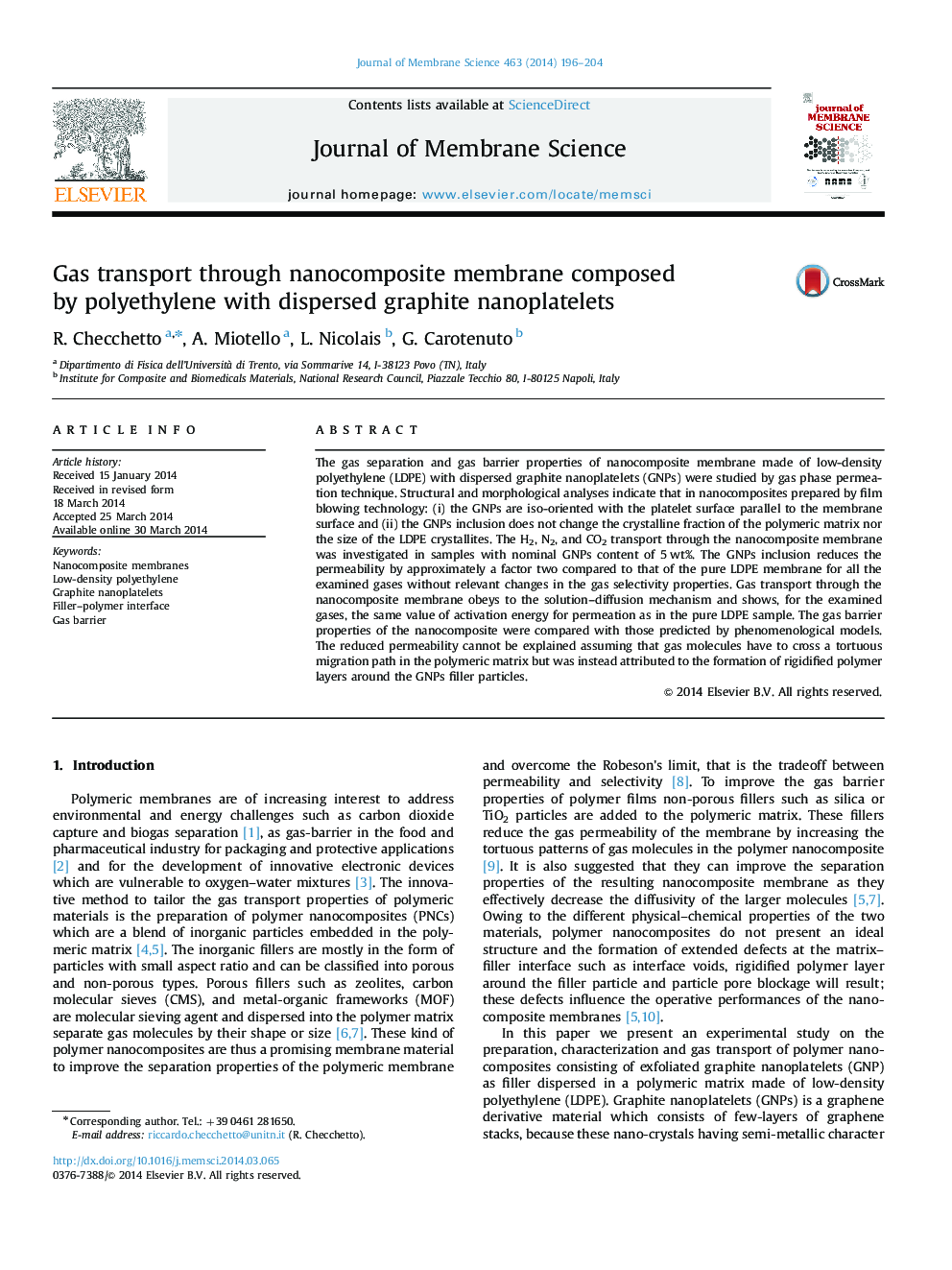| کد مقاله | کد نشریه | سال انتشار | مقاله انگلیسی | نسخه تمام متن |
|---|---|---|---|---|
| 633611 | 1456036 | 2014 | 9 صفحه PDF | دانلود رایگان |
• Nanocomposites of iso-oriented graphite nanoplatelets in polyethylene matrix.
• Gas transport through nanocomposites studied by gas-phase permeation techniques.
• Gas transport by solution–diffusion mechanism as in pure polyethylene.
• Nanocomposites are gas barrier, no changes in gas separation properties.
• Formation of rigidified polymer layers at the filler–matrix interface.
The gas separation and gas barrier properties of nanocomposite membrane made of low-density polyethylene (LDPE) with dispersed graphite nanoplatelets (GNPs) were studied by gas phase permeation technique. Structural and morphological analyses indicate that in nanocomposites prepared by film blowing technology: (i) the GNPs are iso-oriented with the platelet surface parallel to the membrane surface and (ii) the GNPs inclusion does not change the crystalline fraction of the polymeric matrix nor the size of the LDPE crystallites. The H2, N2, and CO2 transport through the nanocomposite membrane was investigated in samples with nominal GNPs content of 5 wt%. The GNPs inclusion reduces the permeability by approximately a factor two compared to that of the pure LDPE membrane for all the examined gases without relevant changes in the gas selectivity properties. Gas transport through the nanocomposite membrane obeys to the solution–diffusion mechanism and shows, for the examined gases, the same value of activation energy for permeation as in the pure LDPE sample. The gas barrier properties of the nanocomposite were compared with those predicted by phenomenological models. The reduced permeability cannot be explained assuming that gas molecules have to cross a tortuous migration path in the polymeric matrix but was instead attributed to the formation of rigidified polymer layers around the GNPs filler particles.
Journal: Journal of Membrane Science - Volume 463, 1 August 2014, Pages 196–204
